Take a look at our sky maps, which are refreshed daily, to help you understand what you can see in the sky each night.
The main part of each image shows the objects' positions visible in the sky at that time. This includes stars, the Moon, and planets.
It is difficult to draw the whole sky in one go on a flat piece of paper or on the computer screen.
This is because the sky is not flat. It is more like a big dome over the observer. In these images, we have solved this problem by showing the sky inside a circle. The horizon is around the outside of the circle. The bit of the sky that would be right overhead is in the centre of the circle.

Our whole sky maps show the sky over the UK for each 2-hour time frame. This is automatically refreshed each night. The observer's horizon is around the outside of the circle. The centre of the picture is the point in the night sky directly above the observer. The four points of the compass (North, East, South and West) are shown, as well as the position of the sunset.
- Whole Sky at 6 pm
The Whole Sky over the UK at 6 pm.
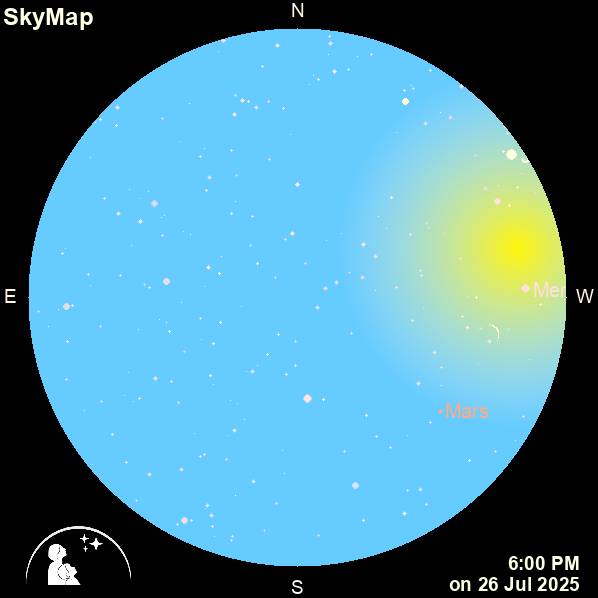
- Whole Sky at 8 pm
The Whole Sky over the UK at 8 pm.
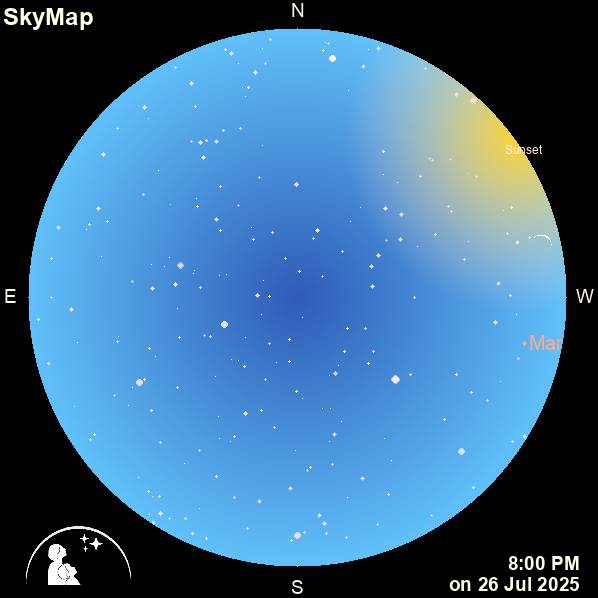
- Whole Sky at 10 pm
The Whole Sky over the UK at 10 pm.
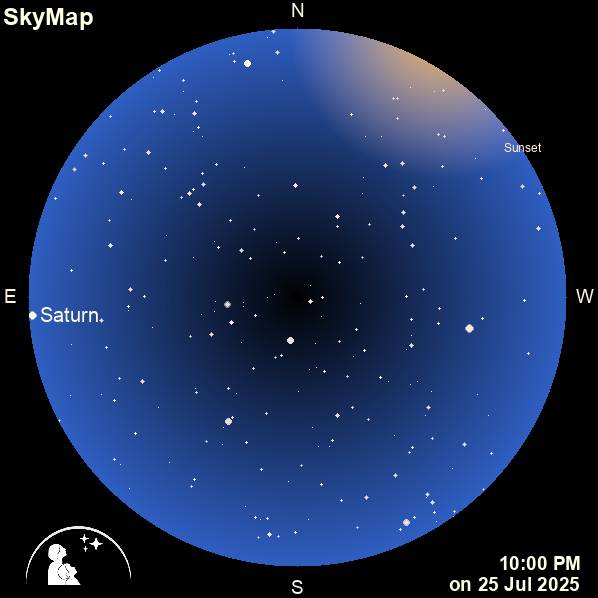
- Whole Sky at Midnight
The Whole Sky over the UK at midnight.
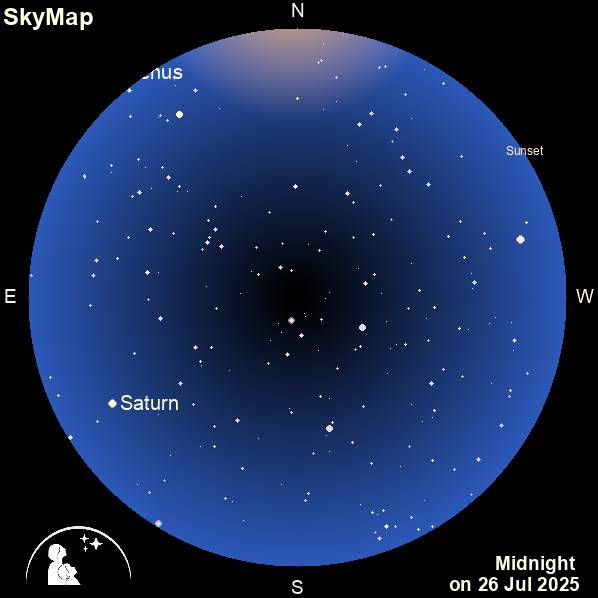
- Whole Sky at 2 am
The Whole Sky over the UK at 2 am.
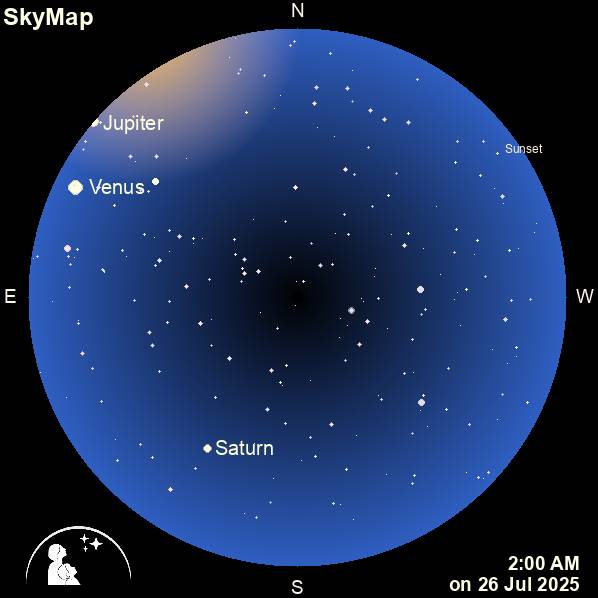
- Whole Sky at 4 am
The Whole Sky over the UK at 4 am.
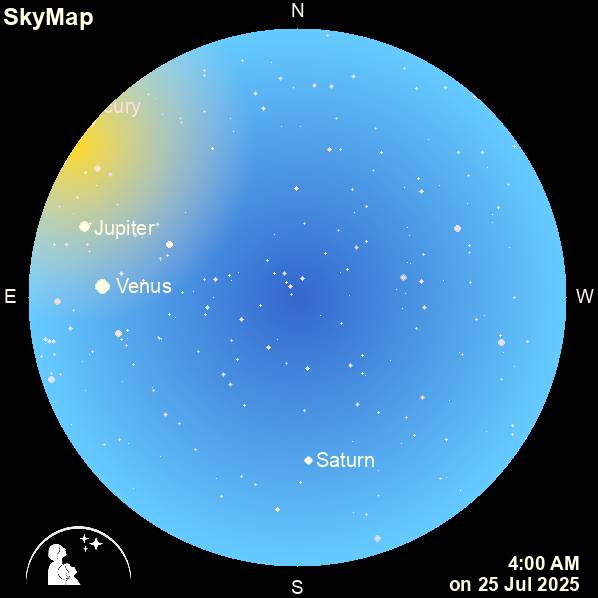
- Whole Sky at 6 am
The Whole Sky over the UK at 6 am.
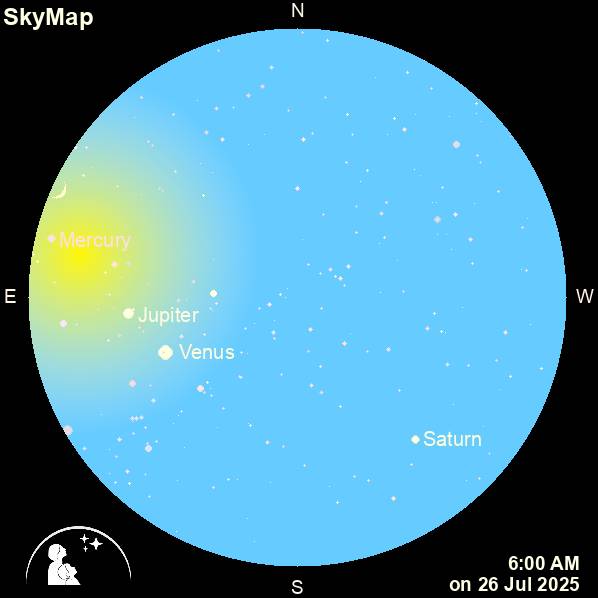
- Whole Sky at 8 am
The Whole Sky over the UK at 8 am.
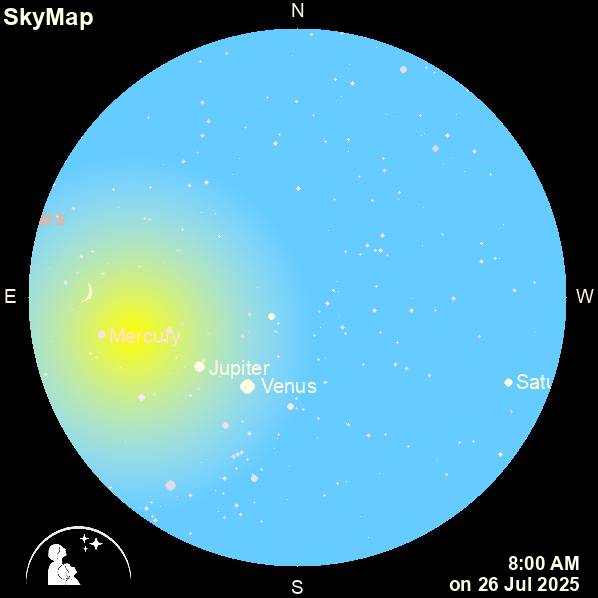
Our horizon sky maps show half of the sky over the UK for each 2-hour time frame. This is automatically refreshed each night. Look at them over a few days to see how things change. Use the images to plan your stargazing. Choose a direction you want to look in (for example, west) and look at the image of the night sky. When you are stargazing, look in the same direction and try to find some of the same star patterns in the sky. You could also look for a planet! Remember to look up at the sky, as well as near to the horizon.
- Horizon at 6 pm
The Horizon over the UK at 6 pm.
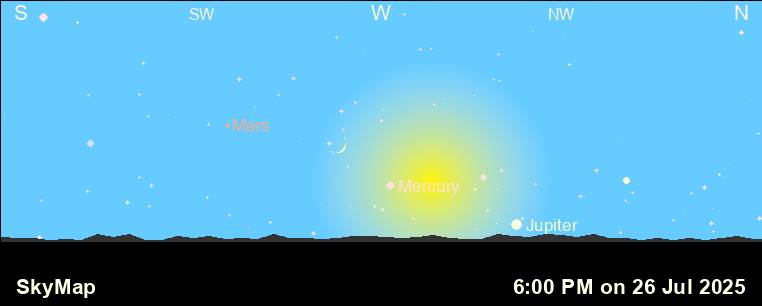
Western Sky 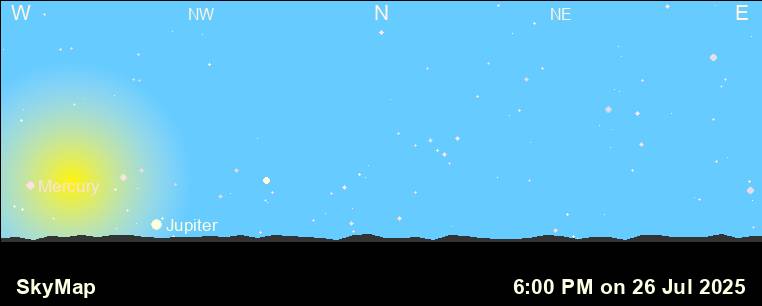
Northern Sky 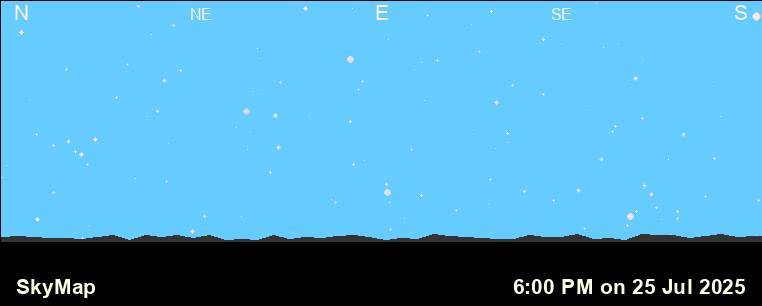
Eastern Sky 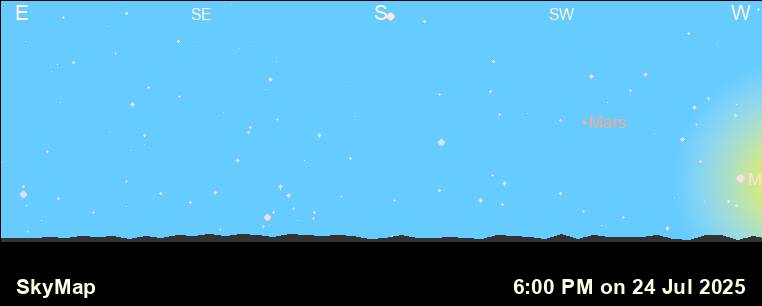
Southern Sky - Horizon at 8 pm
The Horizon over the UK at 8 pm.
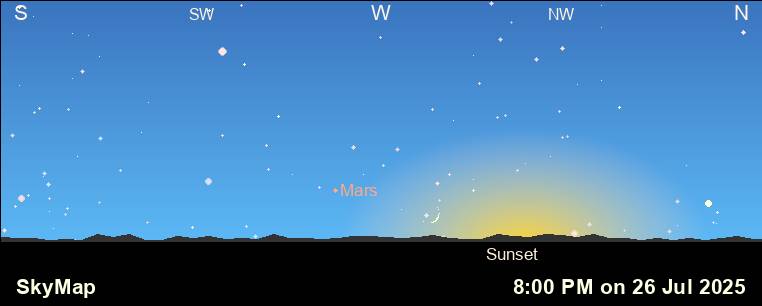
Western Sky 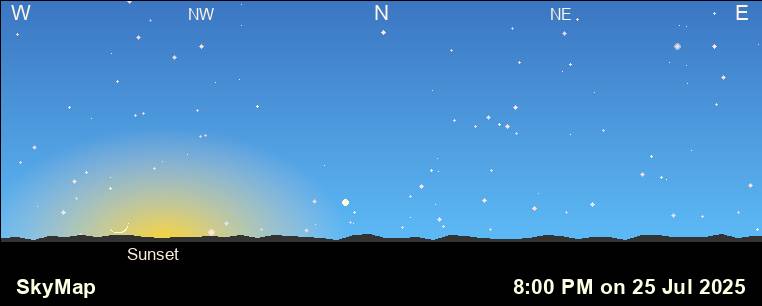
Northern Sky 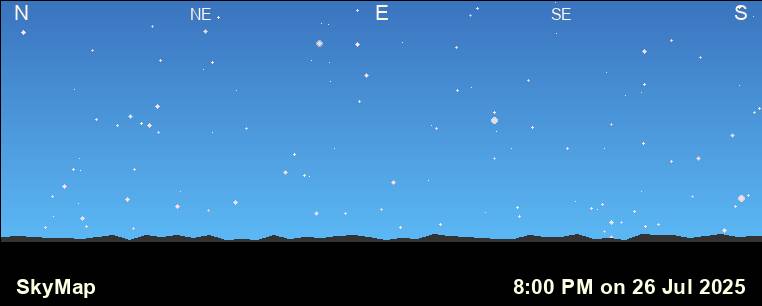
Eastern Sky 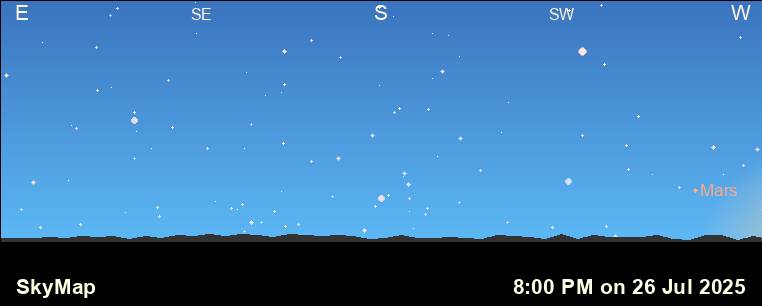
Southern Sky - Horizon at 10 pm
The Horizon over the UK at 10 pm.
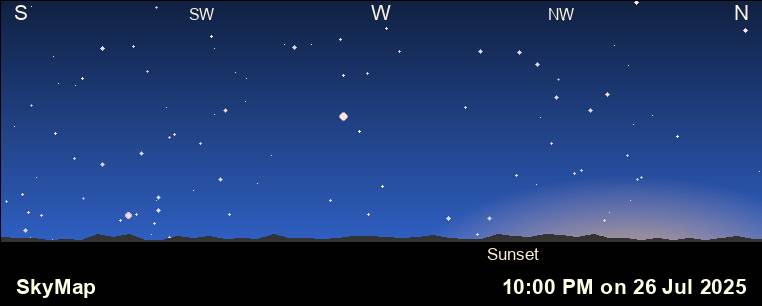
Western Sky 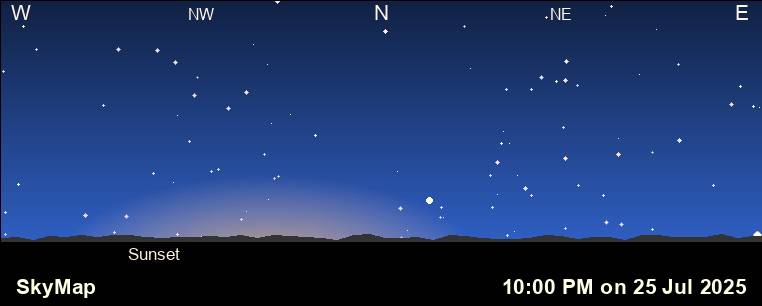
Northern Sky 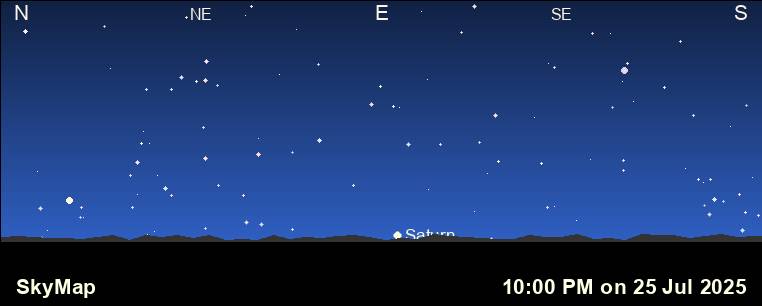
Eastern Sky 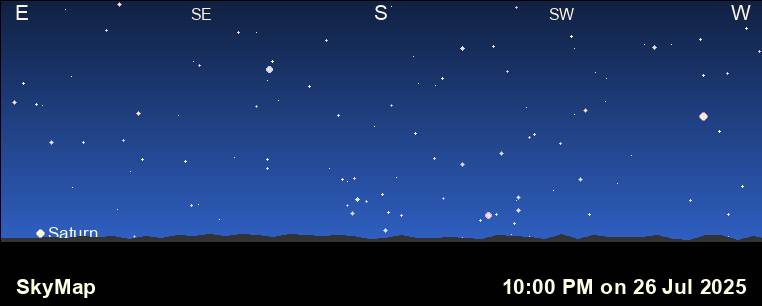
Southern Sky - Horizon at Midnight
The Horizon over the UK at midnight.
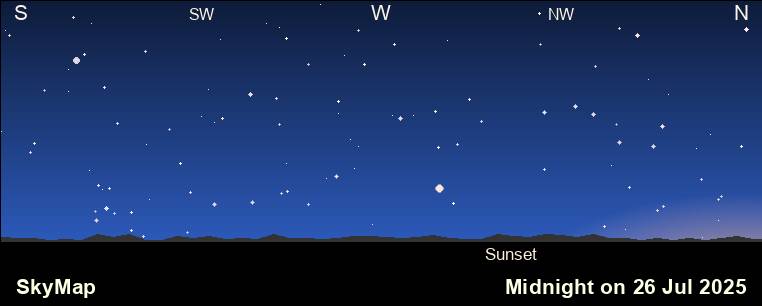
Western Sky 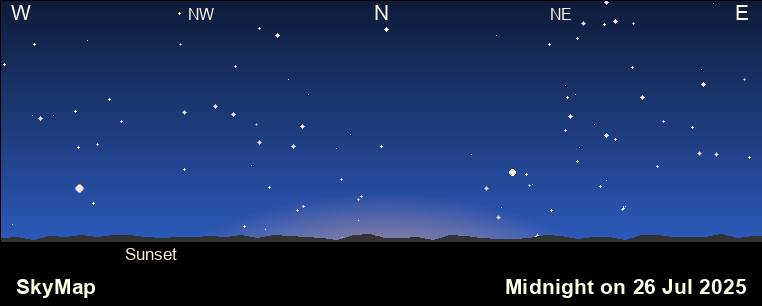
Northern Sky 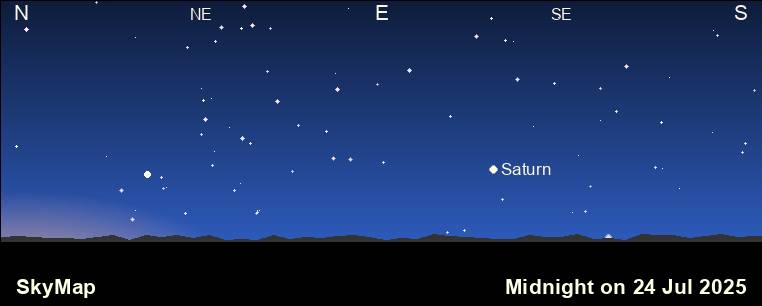
Eastern Sky 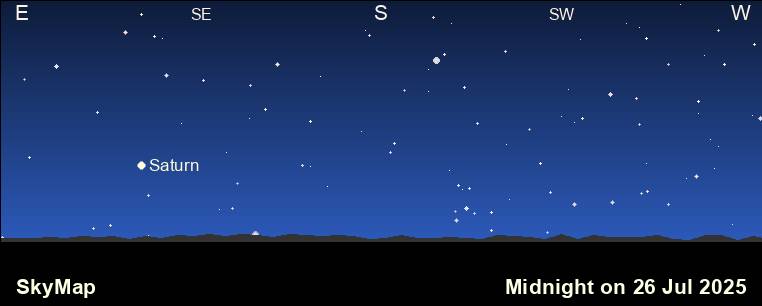
Southern Sky - Horizon at 2 am
The Horizon over the UK at 2 am.
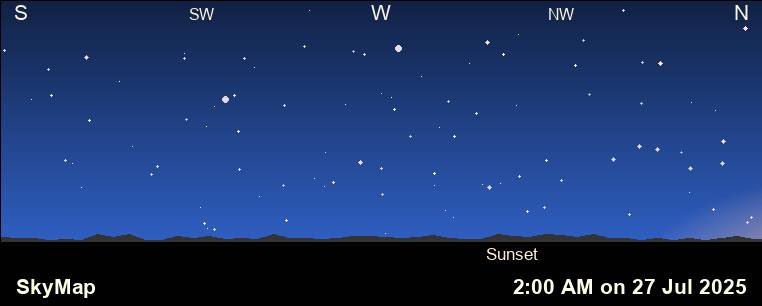
Western Sky 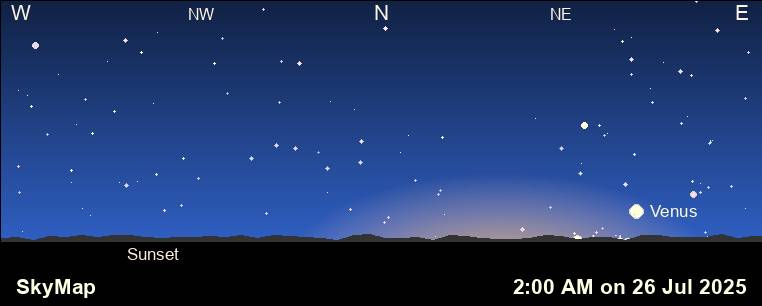
Northern Sky 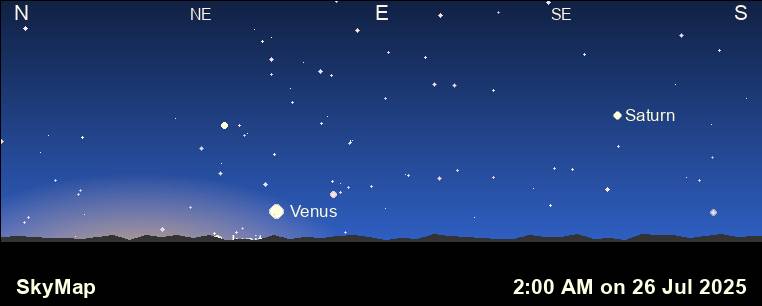
Eastern Sky 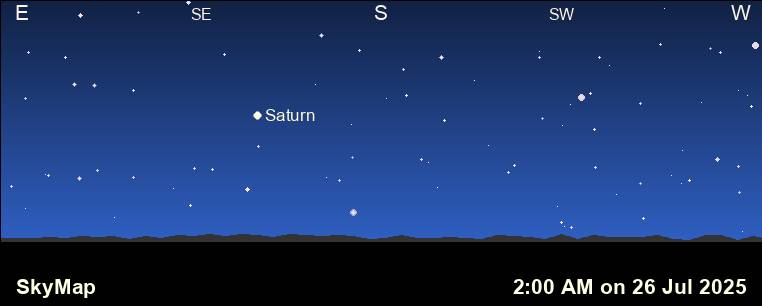
Southern Sky - Horizon at 4 am
The Horizon over the UK at 4 am.
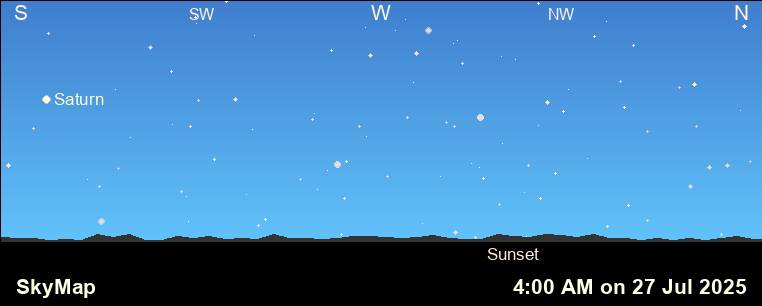
Western Sky 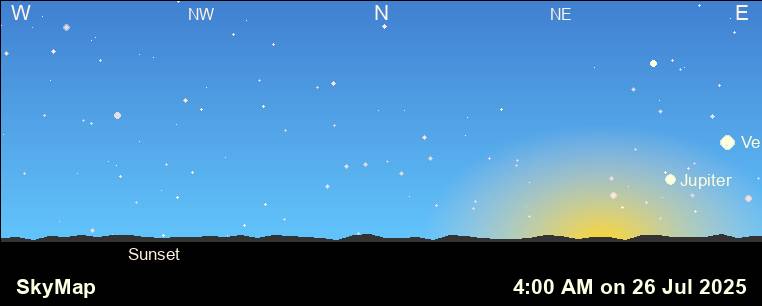
Northern Sky 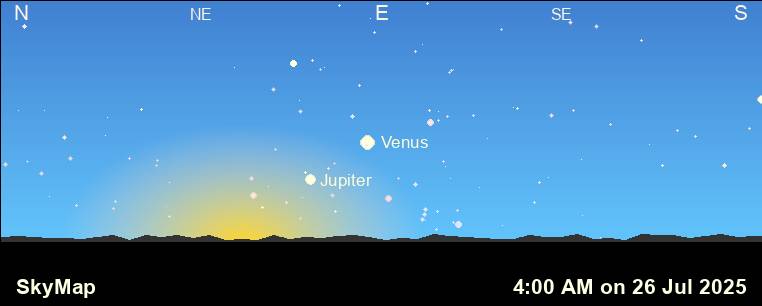
Eastern Sky 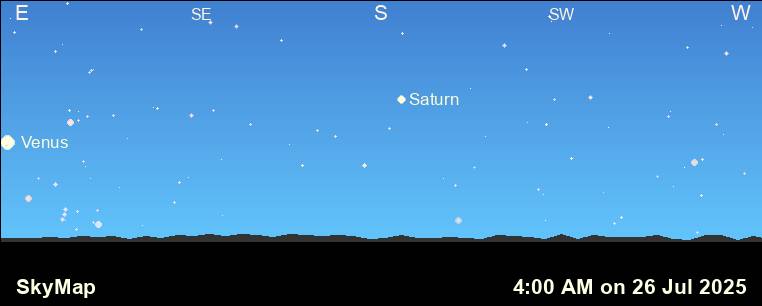
Southern Sky - Horizon at 6 am
The Horizon over the UK at 6 am.
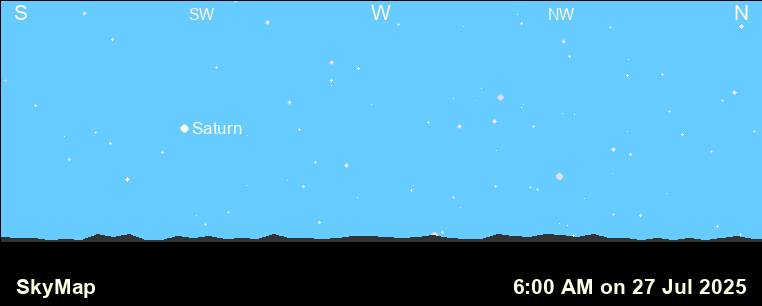
Western Sky 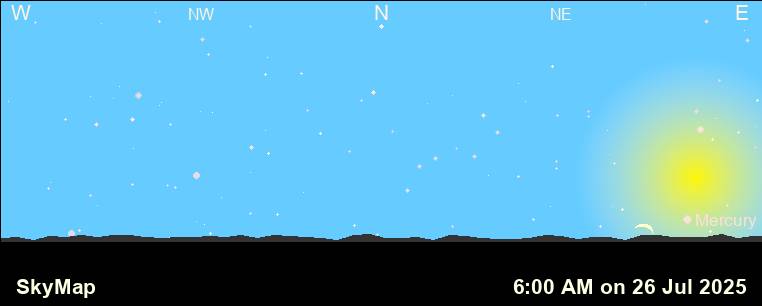
Northern Sky 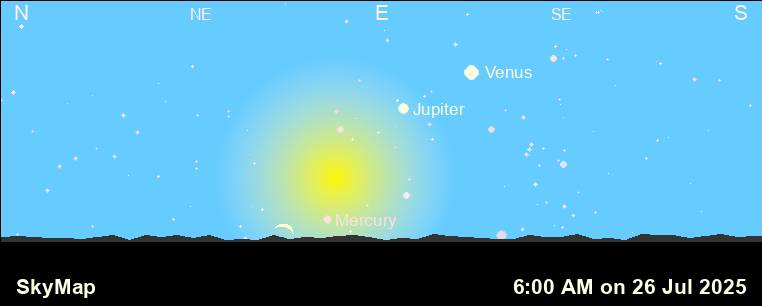
Eastern Sky 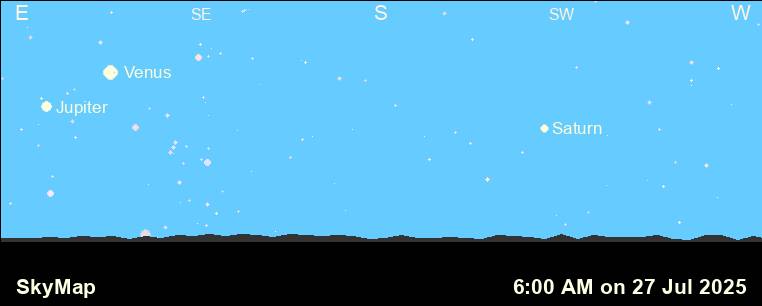
Southern Sky - Horizon at 8 am
The Horizon over the UK at 8 am.
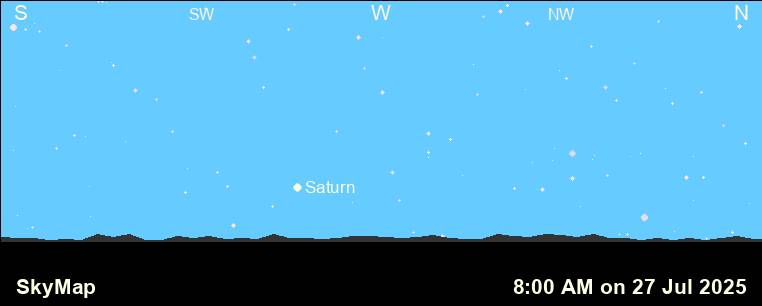
Western Sky 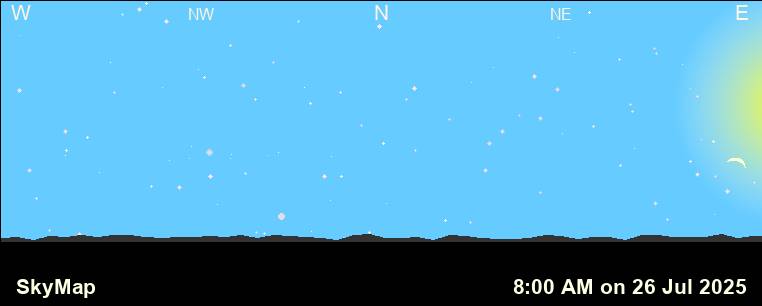
Northern Sky 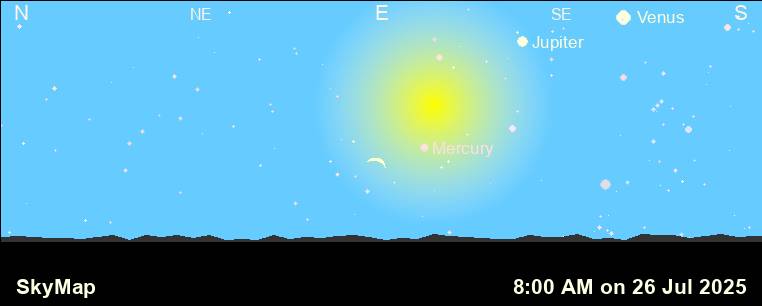
Eastern Sky 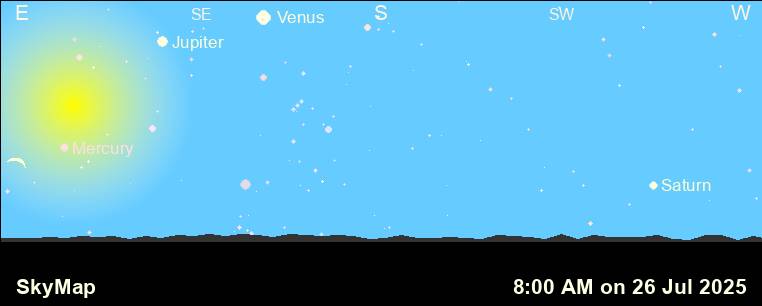
Southern Sky
